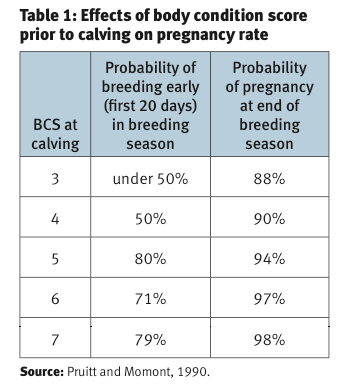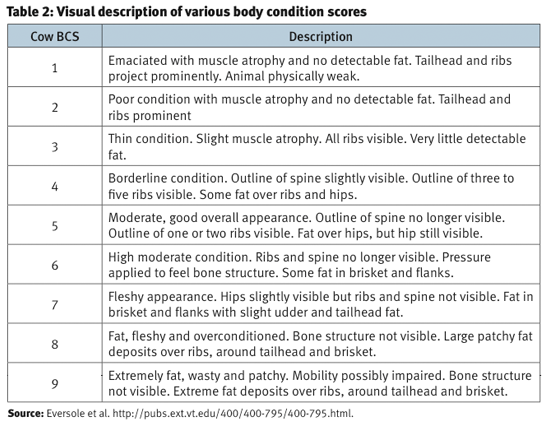



Can Weight Loss Cause Anestrus?
Bill Beal, beef cattle reproductive physiologist, Virginia Tech looks at common problems in cow fertility related to weight loss.The lack of fresh or harvested forage as a result of drought conditions can result in underfeeding cows prior to or during the breeding season.
Underfeeding delays the first estrous cycle after calving or, if weight loss occurs after cows are cycling, it may cause estrous cycles to cease. Underfed cows that regain body weight and body condition have normal fertility.
Managing cows to be in optimum body condition prior to calving and maintaining or enhancing body condition during the breeding season is essential to avoid culling of cows due to reproductive failure.
During the past breeding season I saw very few of my cows in heat and thought they were pregnant. However, my pregnancy rates at the end of the breeding season were lower than ever before. Could the drought have caused my cows to lose so much weight they just stopped cycling?
Response: The length of time from calving to first estrus in beef cows nursing calves is dictated by nutrient intake, weight changes and the effects of suckling. Most beef cows begin cycling by 45-60 days after calving. However, cows in poor body condition can take much longer to begin cycling. You indicated your cows had begun cycling after calving, but wondered if they may have stopped cycling during the breeding season due to weight loss and poor body condition that occurred during the drought. You may be right. There was a very clever experiment done at Oklahoma State University (OSU) that verified the idea weight loss could cause anestrus (lack of estrous cycles).

Researchers at OSU underfed dry cows that were cycling and in good body condition. Underfeeding caused an average weight loss of approximately 10 pounds (lb.) per week. They monitored the cows’ estrous cycles by collecting blood samples and measuring hormone levels. After several months, the underfed cows had each lost an average of 24 per cent of their body weight. Body condition score (BCS) had declined from 5.5 to 3.5 (9-point scale), and 91 per cent of the cows stopped cycling.
Results of this experiment indicate that if your cows were cycling prior to the breeding season, it is possible that they may have stopped cycling as a result of severe weight loss suffered during the drought. Cows nursing calves in your herd may have been even more sensitive to the effects of weight loss than the dry cows used in the OSU experiment. However, in either case the weight loss would have to be severe to cause anestrus.

If my cows stopped cycling due to the weight loss and decreased body condition, will their fertility be reduced permanently or will they recover?
Response: Researchers who had underfed cows to the point of causing them to stop cycling followed that by increasing the feed level, causing cows to regain approximately 15 lb. of body weight per week. They monitored the cows’ estrous cycles and placed them with fertile bulls. Cows began cycling again; however, they had to reach 88 per cent of their initial weight and achieve an average BCS of 4.6 before 90 per cent of the cows began cycling. That is good news, but even better news is that when bred by natural service the first-service pregnancy rate was 82 per cent.
This data suggests that underfed cows that lost weight and stopped cycling during drought conditions should begin cycling again and have normal fertility once they regain weight. However, the lost time may result in them being culled from the herd.
Breeder question Number 3I know I can’t predict when we will have the next drought, but what do you recommend to avoid the poor results I had this year?
Response: It is recommended that cows be in optimum body condition (BCS 5, see Table 2) prior to calving. As shown in Table 1, cows nursing calves are more likely to begin cycling and to become pregnant early in the breeding season if they are in optimum body condition prior to calving.
The data in Table 1 indicate that if cows are thin at calving they are less likely to become pregnant early in the breeding season. However, notice the pregnancy rates of thin cows (BCS three or four) at the end of the breeding season. Thin cows appeared to begin cycling during the breeding season if they gained weight and increased their body condition after calving. However, it is difficult to ensure that a lactating cow can gain weight and improve body condition while raising a calf, especially in drought conditions. Therefore, it is a better management strategy to achieve desirable body condition before calving to increase the chances of your cows breeding early in the breeding season.


